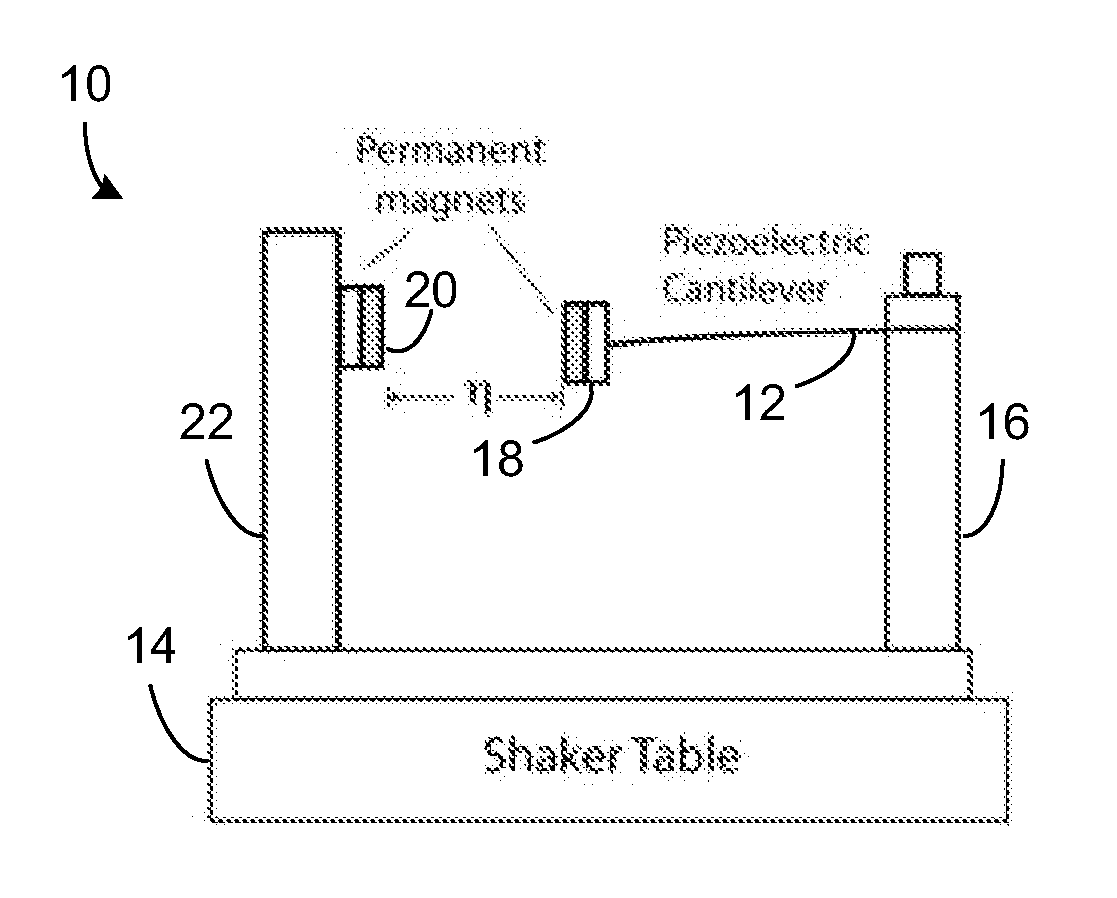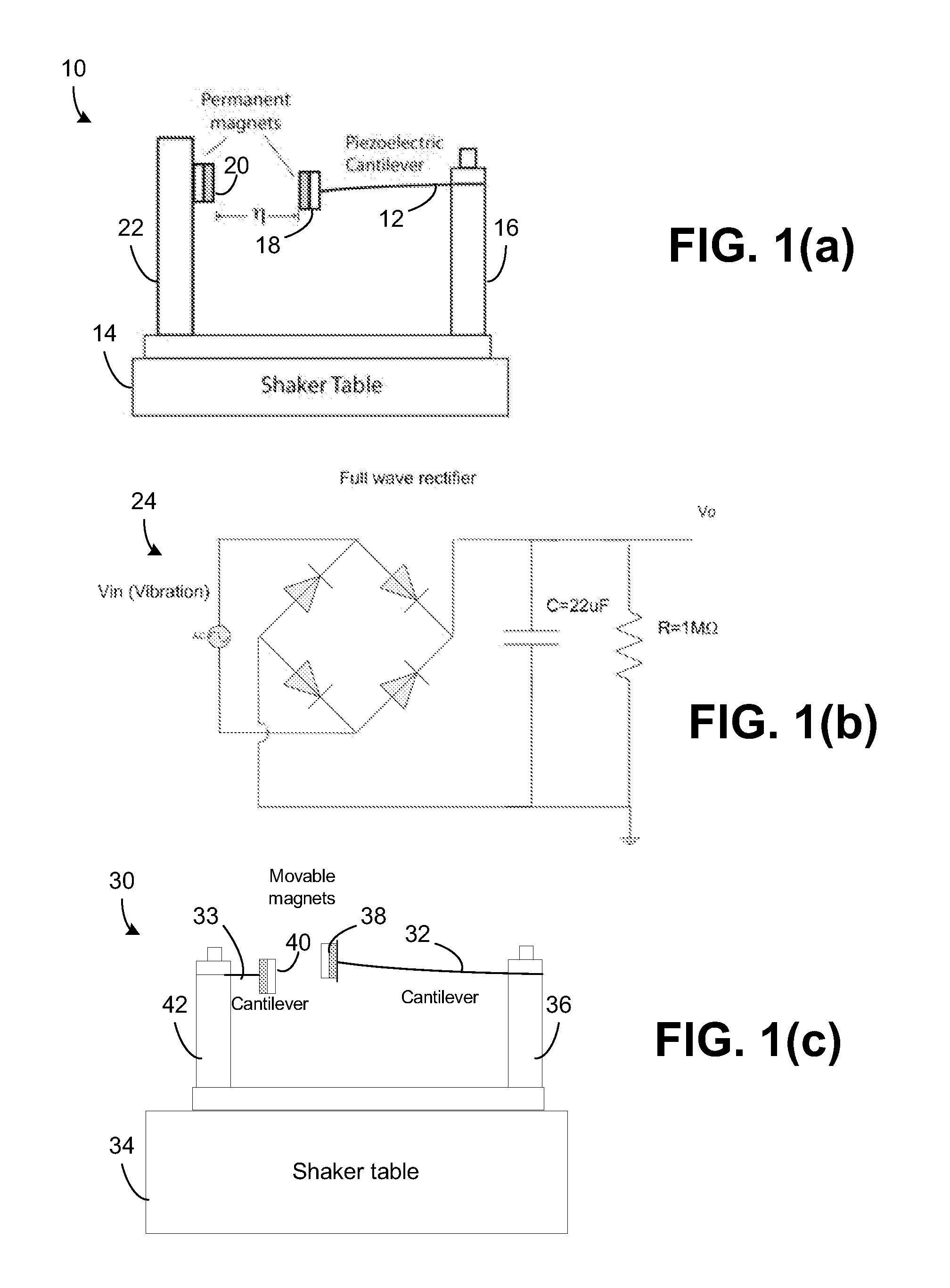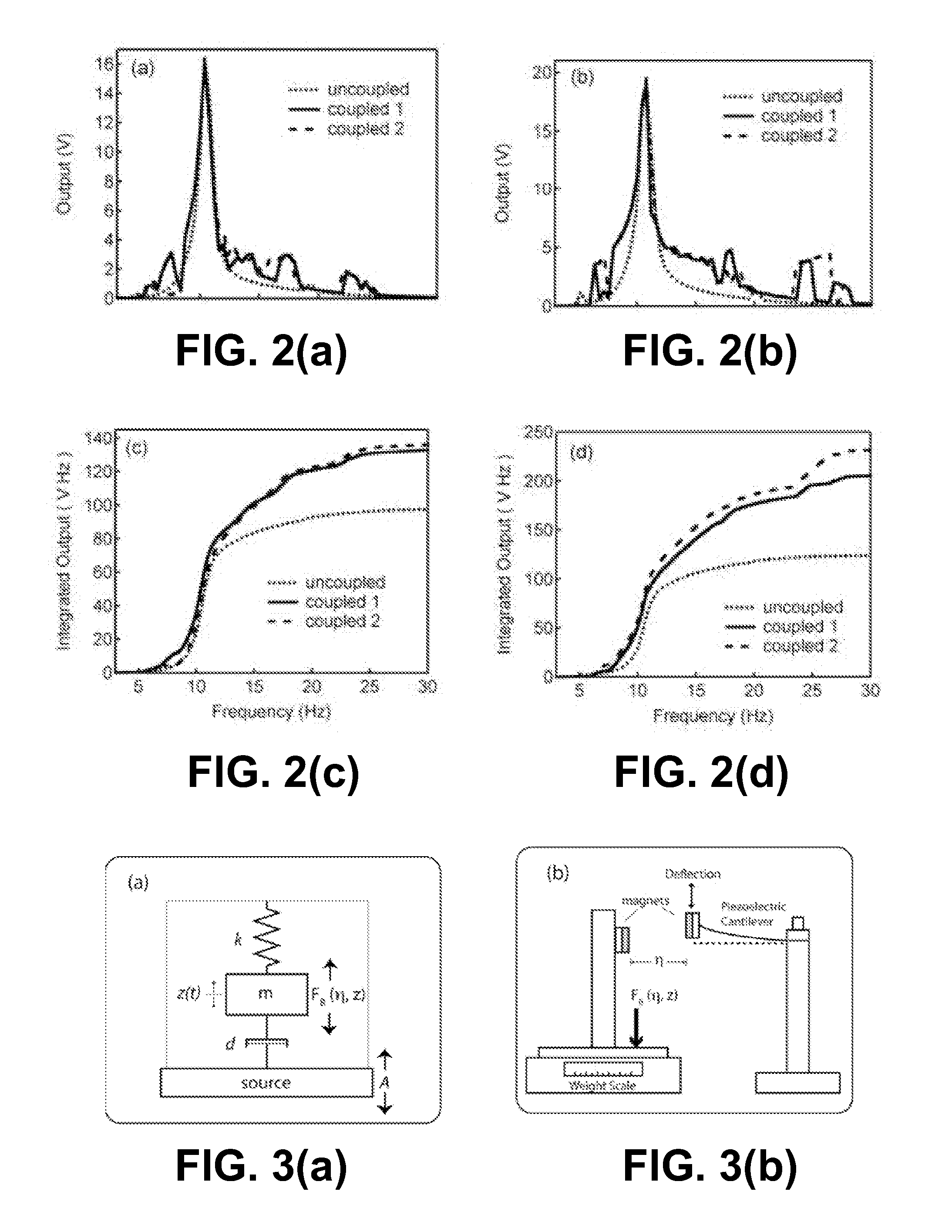Vibration element coupled with non-linear force to improve non-resonant frequency response
a non-linear force and vibration element technology, applied in the field of energy harvesting and vibration sensing, can solve the problems of small amount of available power being scavenged, unable to achieve the improvement of scavenging efficiency, and many naturally occurring vibration sources do not have a fixed frequency of vibration, so as to achieve efficient scavenging energy and improve the overall non-resonant response of vibration elements.
- Summary
- Abstract
- Description
- Claims
- Application Information
AI Technical Summary
Benefits of technology
Problems solved by technology
Method used
Image
Examples
working example 1
Single and Double Cantilevers
[0061]A test set up configured in the manner illustrated above in connection with FIGS. 1(a) and 1(b) was constructed. Cantilever 12 was manufactured using commercially available unimorph piezoelectric discs composed of an about 0.09 mm thick PZT layer deposited on an about 0.1 mm thick brass shim (APC International, MFT-50T-1.9A1). The disc was cut into an about 13 mm wide by about 50 mm long strip, and clamped at one end to produce an about 44 mm long cantilever. The PZT layer extended about 25 mm along the length of the cantilever, and the remainder was composed only of brass. The proof mass (including the magnet and an additional fixture that holds the magnet) weighed about 2.4 gm, while the cantilever itself weighed about 0.8 gm. The electrical leads were soldered with thin lead wires (134 AWP, Vishay) to the top side of the PZT and the bottom side of the shim.
[0062]Vibration was generated by a shaker table 14 (Labwork ET-126) powered by an amplifie...
working example 2
Pink Noise Vibration
[0073]The set-up of FIG. 1(a) was again used, this time with vibration generated by shaker table 14 driven by an amplified pink noise source. The pink noise was generated numerically, with amplitude and crest factor set to about −4 dB and about 1.41, respectively. The average shaker table acceleration was about 7.5 m / s2, independent of the magnetic coupling. A custom Labview data acquisition program measured output voltage from the cantilever beam and the acceleration from the shaker table, once every second. The voltage peak to peak (Vpp) was measured by an oscilloscope (Agilent 54624A), and the dc voltage was detected with a digital multi-meter (YOGOGAWA 7561). An about 4.8 mm diameter round rare earth magnet 18 (Radio Shack model 64-1895) was attached to the vibrating tip of the cantilever beam 12, while a similar opposing magnet 20 was attached directly to the shaker table frame, with repulsive force. The distance between the magnets 11 was adjusted to about ...
PUM
 Login to View More
Login to View More Abstract
Description
Claims
Application Information
 Login to View More
Login to View More - R&D
- Intellectual Property
- Life Sciences
- Materials
- Tech Scout
- Unparalleled Data Quality
- Higher Quality Content
- 60% Fewer Hallucinations
Browse by: Latest US Patents, China's latest patents, Technical Efficacy Thesaurus, Application Domain, Technology Topic, Popular Technical Reports.
© 2025 PatSnap. All rights reserved.Legal|Privacy policy|Modern Slavery Act Transparency Statement|Sitemap|About US| Contact US: help@patsnap.com



